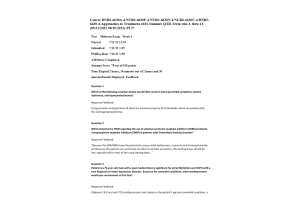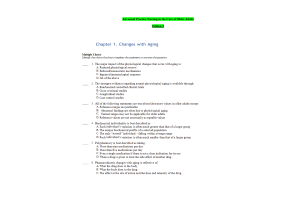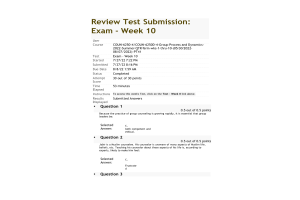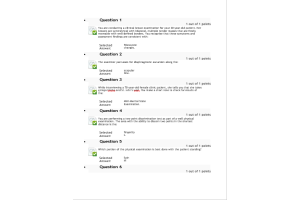COUN 6250-19, Group Process and Dynamics, Week 10 Final Exam
- $49.00
1.Question: __________ encompasses the values, beliefs, and behaviors shared by a group of people.
2.Question: Which of the following is NOT a prompt a leader will use when asking members to complete sentences?
3.Question: Personal , by the leader, can be useful when it is intentional and keeps the focus of attention on the group members rather than on the leader.
4.Question: Which of the following is of paramount concern when screening and selecting potential group members?
5.Question: are characterized by changing membership. As certain members leave, new members are admitted, and the group continues.
6.Question: is the ability to tune in to what others are subjectively experiencing and to see the world through their eyes.
7.Question: Members need to face the reality of and learn how to say good-bye.
8.Question: Abundant research indicates the centrality of as a primary factor in successful therapy, and this is inextricably intertwined with the outcome of psycho therapy.
9.Question: The process of encourages members to accept responsibility for the outcomes of a group and for changing the style in which they relate to others.
10.Question: The logistics of a group includes fees, cancellation policies, and:
11.Question: Starting a session with a brief can set the group up to involve as many members as possible in productive work for that session.
12.Question: Which of the following is a characteristic of a working group?
13.Question: The major task is to provide the and the challenge necessary for members to face and resolve conflicts and negative reactions that exist within the group and certain behaviors that stem from their defenses against.
14.Question: Some members may lack understanding or experience in participating in groups, and their struggle to learn new behavior patterns should not be labeled as ____.
15.Question: A competent therapist remains in the counseling process while maintaining openness about .
16.Question: There is no steadfast rule as to when a leader should or should not .
17.Question: Alan and Arturo, members of a counseling group, have expressed similar feelings of inadequacy following divorce. Sensing this, the leader attempts to foster a line of communication regarding the commonality of the issue between these members. This attempt to build cohesiveness and interaction is known as:
18.Question: Which of the following is a clear sign that trust is being built within the group?
19.Question: Some participants may engage in , believing they are really working, when in fact they are avoiding addressing and dealing with their own feelings.
20.Question: Each member must actively work to open him- or herself to others and to addressing the issues that get in the way of doing so.
21.Question: Mort works in a position of authority. He is a college guidance counselor. He is now a member of a court-mandated group. When others speak of their problems, he is always the first to react, even at the risk of cutting off other would-be responders. He seems to speak more than any other member. His behaviors could legitimately be construed as:
22.Question: Leaders have a responsibility to discuss any breaches with the group and to take action if a member:
23.Question: When you find yourself struggling with an ethical dilemma over a values conflict, the best course to follow is to:
24.Question: While group members are sharing extremely personal information, leaders can remind members about as a way of reassuring the member who is disclosing.
25.Question: Conflict is most likely to occur during which stage of a therapeutic group?
26.Question: Potential additional weight, when screening group prospects, must be given to those who are deemed “difficult” as they:
27.Question: underlies much of members’ behavior in the transitional phase.
28.Question: The reactions members develop toward the group leader and other members can bring out intense feelings in those who are the target of their reactions.
29.Question: The operate to differing degrees in all stages of a group, but they are most often manifested during the working stage.
30.Question: One way for members to share their experience with others outside the group without breaking confidentiality or informed consent is:
31.Question: The self-assessment of group leadership skills will help a beginning leader identify:
32.Question: occurs when group members or leaders share their observations and personal reactions regarding the behavior of another.
33.Question: A characteristic of many members in beginning groups is the tendency to:
34.Question: Groups provide a natural laboratory and a sense of that demonstrates to people that they are not alone and that there is hope for creating a different life.
35.Question: A healing capacity develops within the group as members increasingly experience of who they are.
36.Question: All of the following, according to Yalom (2005b), are stated benefits of cohesive groups EXCEPT:
37.Question: The technique of is designed to help group members express and clarify concerns they have about their future.
38.Question: Many short-term psycho educational groups are structured around:
39.Question: Jabir is a Muslim counselee. His counselor is unaware of many aspects of Muslim life, beliefs, etc. Teaching his counselor about these aspects of his life is, according to experts, likely to make him feel:
40.Question: The importance of the is a well-established critical component of effective therapy.
41.Question: During the initial stage, interventions are aimed at providing encouragement. During the working stage, the leader will:
42.Question: Characteristics of a cohesive group include all of the following EXCEPT:
43.Question: Limitations to confidentiality should be outlined:
44.Question: If (s) is/ are brought to the fore front and dealt with constructively, a negative can be turned into something therapeutic.
45.Question: When forming a proposal for a group, which of the five general guideline areas would you ask yourself the question: does your proposal contain strategies for evaluating how well the stated objectives were met?
46.Question: Isabella continually refers to “Kyle” in what often proves to be lengthy tangents regarding her college years. The name itself evokes a high degree of passion. The group leader can/should:
47.Question: As members successfully interact with one another in the Working Stage, the leader can expect less to be directed toward himself or herself.
48.Question: Members may become more aware of their apprehensions as they experience the group process. As the group moves through the stages:
49.Question: focus on developing members’ cognitive, affective, and behavioral skills through a structured set of procedures within and across group meetings.
50.Question: Leaders should avoid until they have earned that right by building a trusting relationship with the members.
51.Question: A factor to be aware of when terminating a group is the leaders’ own history with
.
52.Question: Group work often provides the potential to further a agenda:
53.Question: The setting and reinforcement of clearly spelled - out group norms is a recommended way of ensuring group _____.
54.Question: Because the practice of group counseling is growing rapidly, it is essential that group leaders be:
55.Question: Ideally, informs your practice, and practice refines your approach to group work.
56.Question: provide a valuable opportunity to reinforce and extend the benefits of the work done during therapy sessions.
57.Question: The done prior to beginning a group helps us learn the history of group members, which enables us to better understand some of their reactions during the group process.
58.Question: Even the thought of is sometimes overwhelming and can stop a person before he or she has begun.
59.Question: generally refers to groups that are time limited, have a preset time for termination, have a process orientation, and are professionally led.
60.Question: Which of the following is NOT considered a critical-to-address characteristic of the Transition Stage?
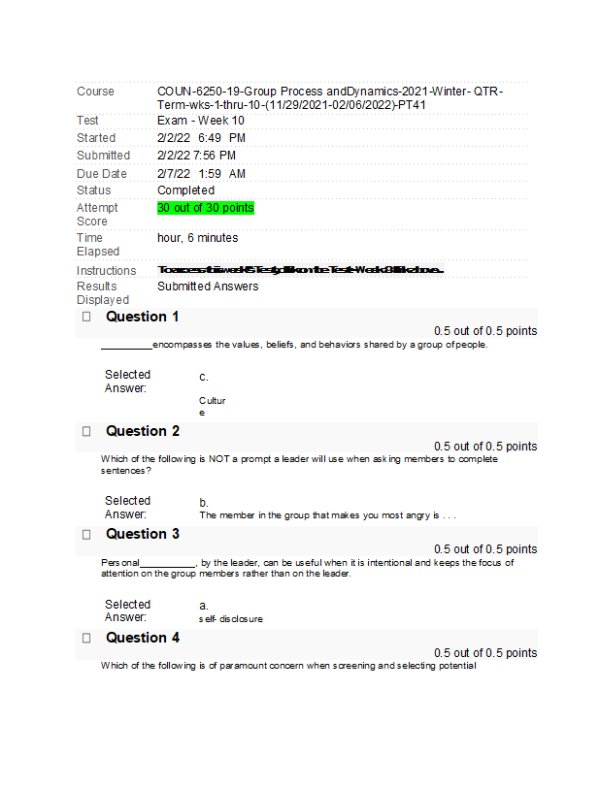
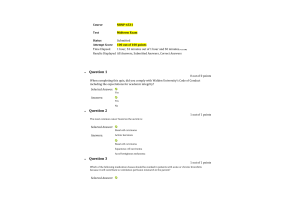
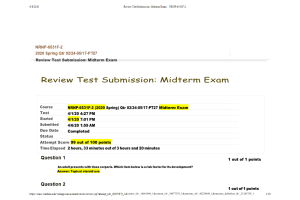
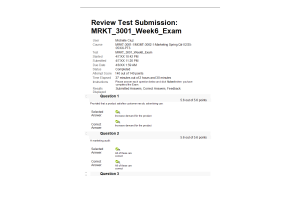
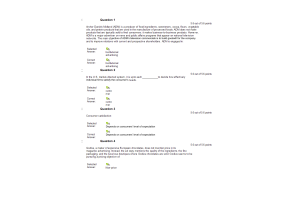
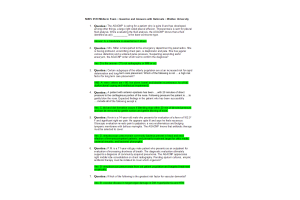
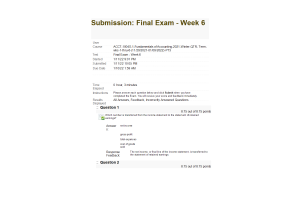
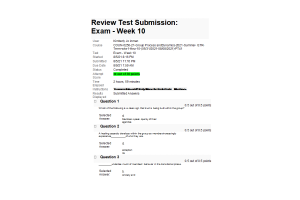
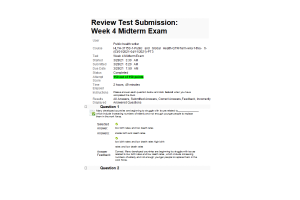
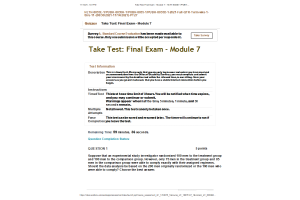
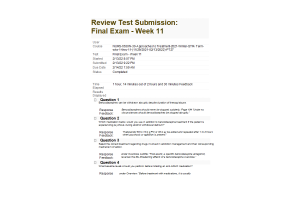
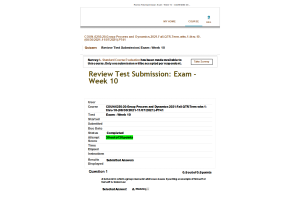

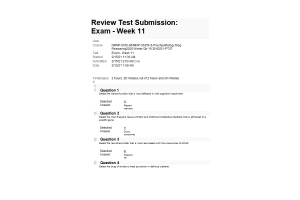
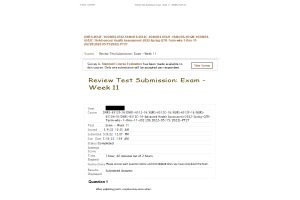
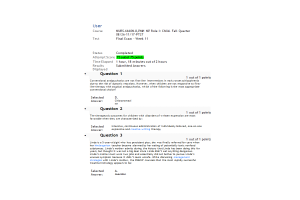
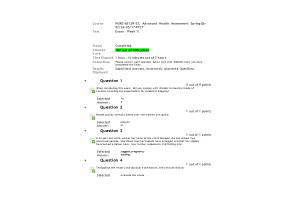
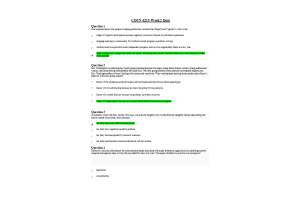
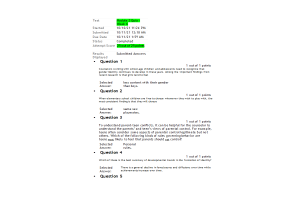
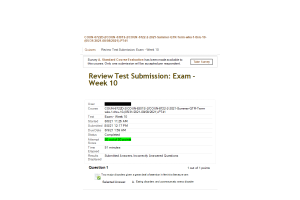
-300x200.png)
